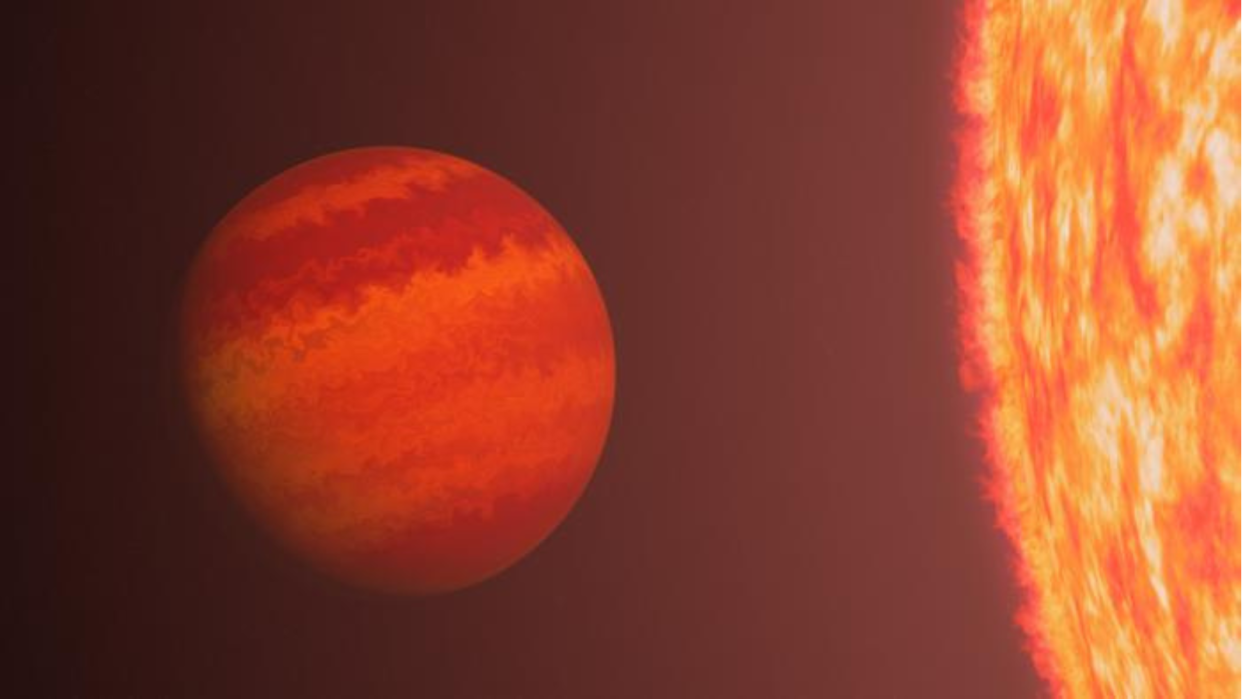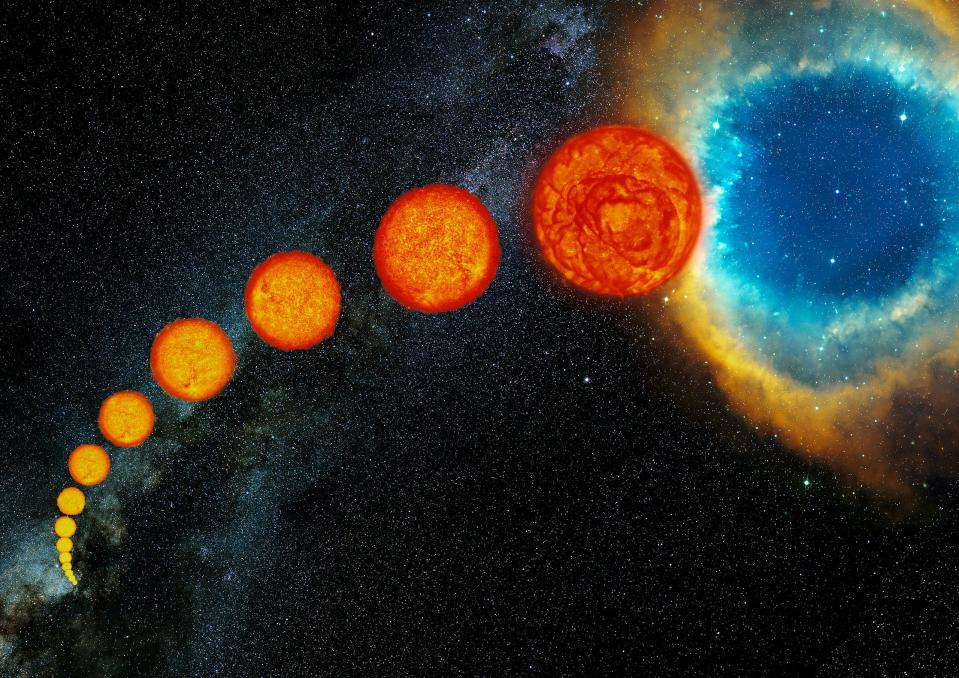NASA exoplanet hunter finds 'weird' world surviving a star's relentless bombardment — it's named Phoenix

A strange planet discovered with NASA's Transiting Exoplanet Survey Satellite (TESS) has astronomers confused. Despite getting relentlessly bombarded with radiation from its red giant parent star, the world has, against all odds, hung on to its atmosphere. It is also smaller, older and hotter than scientists thought possible for such a planet.
In truth, the extrasolar planet, or "exoplanet," should be a bare husk of rock due to its proximity to the star TIC 365102760, located around 1,800 light-years away from Earth. Yet the world, nicknamed "Phoenix," has emerged from the flames of its host star with a nice and puffy atmosphere.
Phoenix, or TIC 365102760 b as the planet is officially designated, is part of a rare class of planets called "hot Neptunes." these are worlds with radii smaller than Jupiter's, but larger than Earth's. And, unlike the solar system's ice giant of the same name, hot Neptunes dwell relatively close to their host stars. Phoenix might be an incredible survivor, but the roughly 10 billion-year-old planet's luck and resilience won't last forever. The team that discovered it predicts it will spiral into its giant star in around 100 million years.
The discovery of Phoenix shows the diverse variety of exoplanets that exist across the universe, and demonstrates that a planetary system can evolve in many ways.
Related: NASA space telescope finds Earth-size exoplanet that's 'not a bad place' to hunt for life
"This planet isn't evolving the way we thought it would. It appears to have a much bigger, less dense atmosphere than we expected for these systems," team leader and Johns Hopkins University astrophysicist Sam Grunblatt said in a statement. "How it held on to that atmosphere despite being so close to such a large host star is the big question."
What can Phoenix tells us about Earth's future
TIC 365102760 is a red giant star, which means it has spent around 10 billion years converting hydrogen to helium at its core. When the hydrogen fuel for this nuclear fusion process was exhausted, the energy supporting the star against its own gravity also ended. This meant the star's core would have collapsed while its outer layers, where nuclear fusion was still happening, swelled to as much as 100 times the star's original width.
Phoenix orbits this star at a distance of about 5.6 million miles away, or around 0.06 times the distance between us and the sun. That means the peculiar exoplanet has a year that lasts just 4.2 Earth days. Plus, with a width around 6.2 times that of Earth and a mass about 20 times that of our planet, Phoenix also has an unexpectedly low density. It's around 60 times less dense than the densest hot Neptune exoplanet discovered thus far.
The advanced age and low density of Phoenix indicate that some process must have been stripping its atmosphere much slower than scientists previously believed possible for a world so close to its star.
"It's the smallest planet we've ever found around one of these red giants and probably the lowest mass planet orbiting a [red] giant star we've ever seen," Grunblatt said. "That's why it looks really weird. We don't know why it still has an atmosphere when other 'hot Neptunes' that are much smaller and much denser seem to be losing their atmospheres in much less extreme environments."

The sun itself will undergo a similar red giant transformation in around 5 billion years, expanding out as far as the orbit of Mars and consuming the inner rocky planets, including Earth.
The Phoenix findings, made possible by filtering out unwanted starlight from TESS observations, could therefore help scientists better predict what will happen to Earth's atmosphere before our planet meets its final fate.
"We don't understand the late-stage evolution of planetary systems very well," Grunblatt said. "This is telling us that maybe Earth's atmosphere won't evolve exactly how we thought it would."
Related Stories:
— Cotton candy exoplanet is 2nd lightest planet ever found
— Earth-size planet discovered around cool red dwarf star shares its name with a biscuit
— Star blows giant exoplanet's atmosphere away, leaving massive tail in its wake
Phoenix is a rare find. Planets of such small sizes are difficult to see via the dips in light they cause as they cross, or "transit," the face of their stars. As this is the technique TESS uses to find planets, the NASA spacecraft is generally better at seeing large and dense planets.
The discovery of Phoenix validates the space explorer's ability to see smaller and puffier planets when the data is correctly handled. Grunblatt and colleagues have already used their newly developed method to observe dozens of smaller worlds — and this hunt will continue.
"We still have a long way to go in understanding how planetary atmospheres evolve over time," he concluded.
The team's research was published on Wednesday in The Astrophysical Journal.
